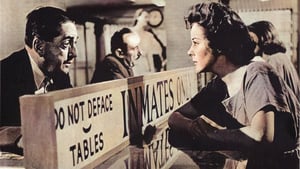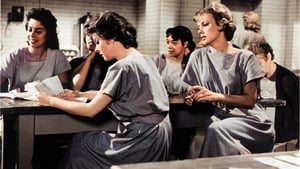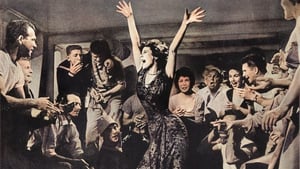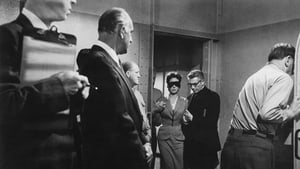Video Sources 0 Views
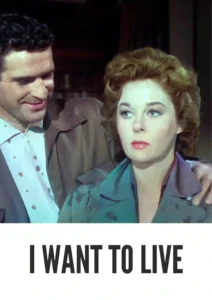
Synopsis

Dive into the harrowing true story of Barbara Graham with I Want to Live!, a powerful crime drama from 1958, meticulously colorized to amplify its emotional impact. Starring Susan Hayward in an Oscar-winning performance, this film explores the complexities of justice, media sensationalism, and one woman’s desperate fight against a system determined to condemn her. Perfect for fans of intense, thought-provoking cinema, this HD download offers a visually enhanced experience of a landmark film that continues to resonate today. This is not your typical film noir, but a stark, unflinching look at the human condition under extraordinary pressure.
I Want to Live! chronicles the life of Barbara Graham (Susan Hayward), a woman with a troubled past who becomes entangled in a murder case. Despite maintaining her innocence, circumstantial evidence and a prejudiced legal system conspire against her. The film portrays Barbara’s journey from a life of petty crime to her arrest, trial, and eventual conviction for murder.
As Barbara navigates the corrupt legal system, she encounters various individuals who influence her fate, including cynical reporters, opportunistic lawyers, and dubious witnesses. The film portrays her transformation from a hardened cynic to a woman desperate to prove her innocence and save her own life. The film culminates in a gripping and emotionally charged depiction of Barbara’s final hours, highlighting the cruelty and inhumanity of capital punishment. Ultimately, I Want to Live! is a searing indictment of the death penalty and a powerful testament to the resilience of the human spirit.
The film features a stellar cast of actors who bring depth and authenticity to this tragic story:
-
Susan Hayward as Barbara Graham
-
Simon Oakland as Ed Montgomery
-
Theodore Bikel as Carl Palmberg
-
Wesley Lau as Henry Graham
-
Philip Coolidge as Emmett Perkins
I Want to Live! transcends traditional genre boundaries, blending elements of crime drama, legal thriller, and social commentary. Its unflinching portrayal of the criminal justice system and its exploration of complex moral issues make it a compelling and thought-provoking film.
Released in 1958, I Want to Live! reflects the growing debate over capital punishment in the United States. The film’s sympathetic portrayal of Barbara Graham and its scathing critique of the legal system sparked controversy and fueled discussions about the fairness and morality of the death penalty. I Want to Live! is not only a powerful courtroom drama but also a significant work of social commentary that continues to resonate in contemporary discussions about criminal justice reform.
This colorized version of I Want to Live! has been painstakingly restored using state-of-the-art digital techniques, enhancing the visual impact of the film while preserving its original atmosphere of tension and suspense. The colorization process involved meticulous attention to detail, ensuring that the colors accurately reflect the period and enhance the emotional impact of each scene. Advanced algorithms were employed to analyze the grayscale tones of the original black and white footage and assign appropriate colors, bringing new life to the characters and settings. This meticulous process enhances the viewing experience, making the story even more engaging for modern audiences.
-
: Robert Wise
-
: Nelson Gidding, Don Mankiewicz
-
: articles by Ed Montgomery and letters by Barbara Graham
-
: Lionel Lindon
-
: William Hornbeck
-
: Figaro Inc.
-
: United Artists
-
: 120 minutes
-
: MP4
-
: HD (1080p)
-
: Compatible with most devices, including smartphones, tablets, computers, and smart TVs.
I Want to Live! (1958) is widely regarded as a landmark film in the history of American cinema, earning critical acclaim for its powerful performances, taut direction, and unflinching social commentary. Susan Hayward’s portrayal of Barbara Graham is considered one of the greatest performances in film history, earning her an Academy Award for Best Actress. The film’s exploration of capital punishment and its critique of the media’s role in shaping public opinion continue to resonate with audiences today.
-
: What is I Want to Live! about?
-
A: I Want to Live! is a crime drama about Barbara Graham, a woman convicted of murder who fights to prove her innocence and save her own life.
-
-
: Is Susan Hayward’s performance in I Want to Live! critically acclaimed?
-
A: Yes, Susan Hayward won an Academy Award for her performance as Barbara Graham.
-
-
: Is this version of I Want to Live! colorized?
-
A: Yes, this version has been professionally colorized to enhance the viewing experience.
-
-
: What themes does I Want to Live! explore?
-
A: I Want to Live! explores themes of capital punishment, media sensationalism, and the complexities of the criminal justice system.
-
-
: What is the download format?
-
A: The download format is MP4, which is compatible with most devices.
-
-
: What resolution is the download?
-
A: The resolution is HD (1080p), providing a high-quality viewing experience.
-
Experience this amazing movie today!
